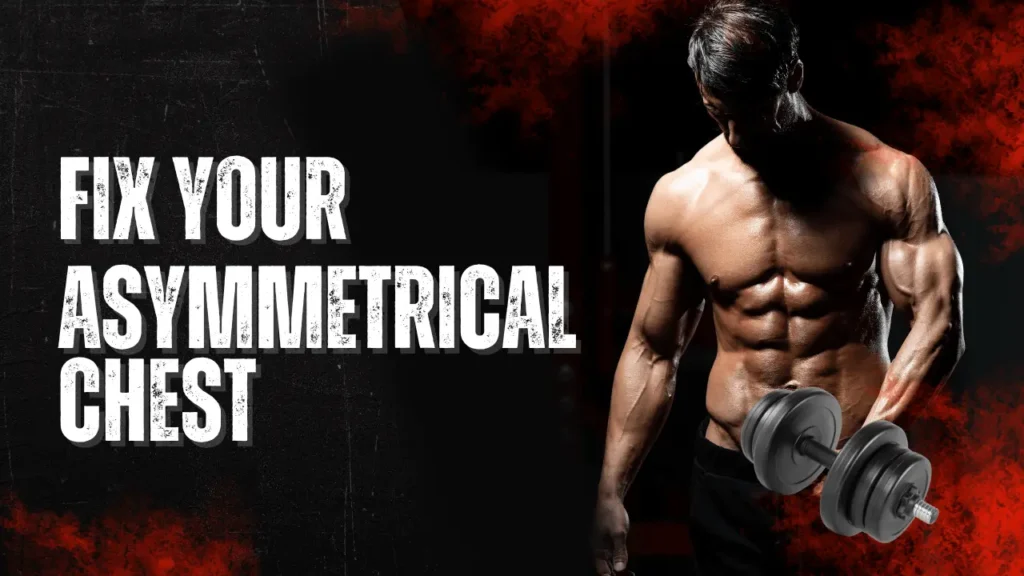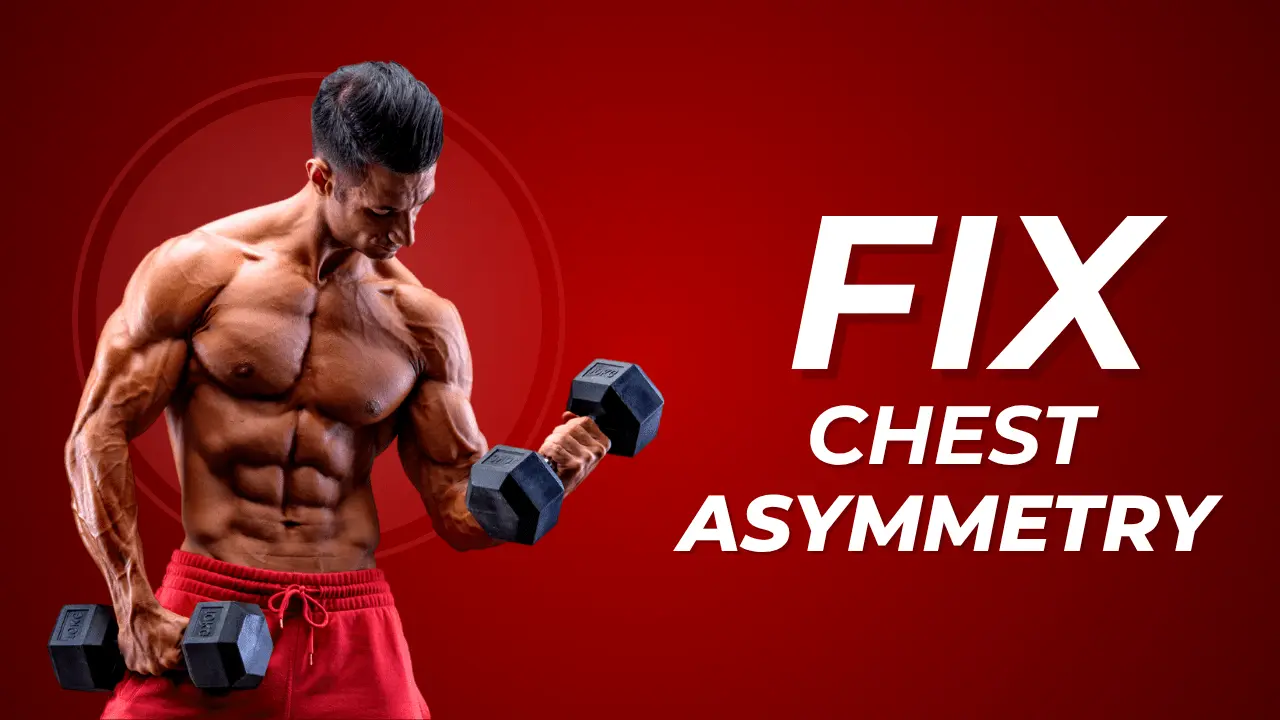Let’s be honest, we all have noticed that one side of our chest is less developed than the other. But the thing is, it’s actually quite common, and more importantly, there are ways to fix it. The less developed part of the chest is considered weaker, but the truth goes much deeper.
In this guide, we will find out each and everything about the chest uneven thing and how to fix it. Single-arm exercises often fail, andribcage positioning and breathing mechanism might be the reason for your less developed part of the chest.

Understanding the Root Cause: It’s Not Just Muscle Imbalance
Most people assume their uneven pecs are the result of muscle weakness or poor training technique. While those factors can contribute, they’re often just symptoms of a deeper postural imbalance.
The fact is that the muscle function is dependent on bone and joint positioning, mostly around the rib cage area. The rib cage acts as a platform for the pectoral muscles. If one side of your chest is depressed, then your pec on that side won’t be able to stretch or contract properly; it will eventually end up limiting the ability to grow.
Let’s break that down:
- If one side of your rib cage is more “deflated”* it means those ribs are in a more internally rotated and exhaled position.
- The other side is likely more “inflated,” in an externally rotated and inhaled position.
- When this happens, the sternum (breastbone) shifts toward the depressed side, further limiting range of motion.
The asymmetry directly influences your pec’s ability to stretch to its full potential and contract, which is essential for muscle growth.
Why Traditional Chest Fixes Often Don’t Work
If you’ve been trying to correct your uneven chest by doing:
- Single-arm dumbbell presses
- Unilateral flys
- More reps on the weaker side
Sadly, these exercises don’t address the rib cage positions that are limiting how well the muscle can function. Just by increasing the volume on the smaller side, the pec muscle won’t grow until and unless it’s in the right position to expand and contract.
Suggestion: You might also like to know about best PPL Split.
Two Self-Tests to Confirm Asymmetry
Before jumping into corrective exercises, try these two simple assessments:
1. Shoulder Internal Rotation Test
Lie on your back with arms at 90 degrees, then lower your forearms toward the floor.
If one side feels *more restricted**, that may indicate your rib cage is more compressed on that side.
2. Shoulder External Rotation Test
Same setup, but rotate your forearm backward (toward your head).
A rotated sternum will usually give you more *external rotation on the side you’re turned toward* and less on the other.
These tests will help you find your mobility limitations.
Corrective Exercises to Fix Your Uneven Chest
To fix this problem, you need to reposition your rib cage, improve your breathing mechanism, and restore symmetry. That is why we are here with 3 expert-approved exercises to help you:
Exercise 1: 90/90 Side Plank with Reach (Open Up the Front Chest Wall)
Purpose: Expand the compressed side of your chest (typically the smaller side).
Setup:
- Lie on your side with hips and knees bent at 90 degrees.
- The elbow of the “down” side should be directly under your shoulder.
- Palm facing up if comfortable (or neutral grip if you have wrist pain).
Action:
- Press through the ground to lift your body.
Breathe in through your nose, out through your mouth. - Feel the lower abs on the downside engage and the chest on the opposite side expand.
Progression: Add a gentle overhead reach with the top arm. Keep the ribs down and avoid flaring.
Exercise 2: Quadruped Reach with Support (Open Up the Upper Back)
Purpose: Push the back ribs back (typically the tight side).
Setup:
- Get into a quadruped position (hands under shoulders, knees under hips).
- Place a book under the hand on the side where you want to push the ribs back (usually the “inflated” side).
- Slight bend in elbows, soft knees.
Action:
- Round your upper back and gently tuck your hips.
- Imagine your back ribs pushing up toward the ceiling.
- Long exhale (5–10 seconds), hold that ab tension at the end of exhale.
- Inhale through the nose while maintaining abdominal engagement.
Goal: Feel expansion in your upper back where the book is. Repeat for 2–3 sets of 5 breath cycles.
Exercise 3: Seated Side Bend with Reach (Combine Front + Back Expansion)
Purpose: Address both the compressed front and tight back at the same time.
Setup:
- Sit on a bench or chair, knees and hips at 90 degrees.
- Roll pelvis backward to feel your sit bones evenly.
- Place your hand on the side where your ribs are compressed (usually the left).
Action:
- Gently side bend toward* the compressed side while keeping both sit bones grounded.
- Extend the opposite arm to the side (not overhead).
- Exhale fully through the mouth, engaging side abs.
- Inhale through the nose, feeling expansion in the side chest wall.
Cues:
- Don’t over-bend or let your ribs flare.
- Keep the rib cage “down and in” during the reach.
- Focus on quality breathing; breathing is the driver of change here.
How Often Should You Do These?
Perform each exercise:
- 2–3 sets
- 8 full breath cycles per set
- At least 3–4 times per week
It’s better to do small, consistent sessions with focused breathing than occasional high-volume sessions.
Don’t Forget About the Pelvis
Indeed, the rib cage plays an important role, but the pelvis also influences your chest symmetry.
If one side of your pelvis is more forward, it can push that side of your rib cage forward, creating the exact asymmetry we’re trying to fix.
Even after doing all these things, if you are still not seeing results, you must visit with a physical therapist or postural restoration specialist to assess your pelvis.
Final Thoughts: Stop Chasing Symptoms, Fix the Cause
An uneven chest is not only considered a visual problem but also a postural problem too. Instead of overtraining the weaker side with more reps, address the position and function of your rib cage and how well your body can inhale, exhale, and move air side-to-side.
Follow this guide for at least 2 months, and soon you will see some real and lasting muscle development.
I'm Zusty, a fitness coach and physique analyst with 7+ years of experience. At Artiqall, I break down celebrity transformations, social media physiques, and share no-fluff fitness tips to help you train smarter and stay inspired.

